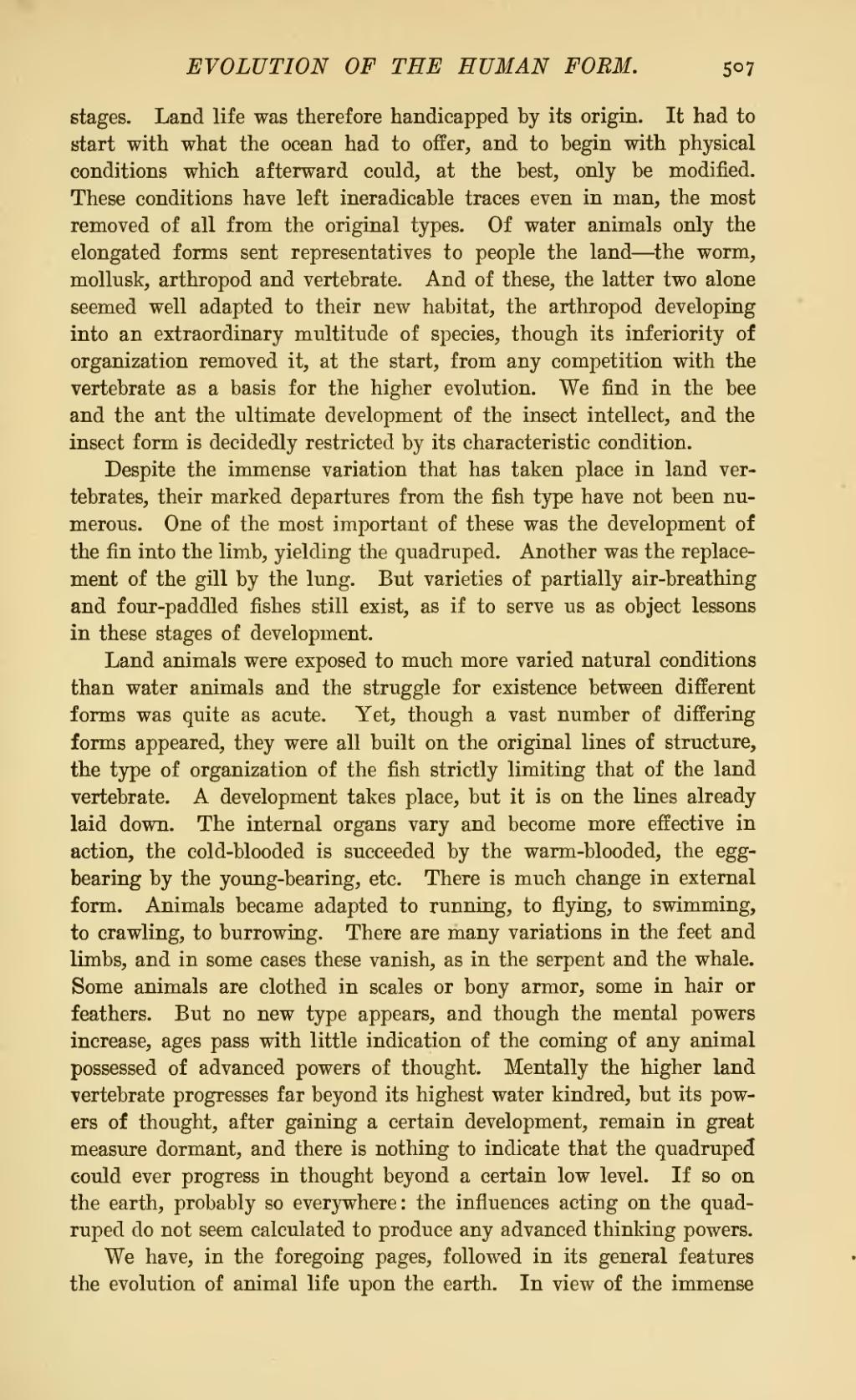stages. Land life was therefore handicapped by its origin. It had to start with what the ocean had to offer, and to begin with physical conditions which afterward could, at the best, only be modified. These conditions have left ineradicable traces even in man, the most removed of all from the original types. Of water animals only the elongated forms sent representatives to people the land—the worm, mollusk, arthropod and vertebrate. And of these, the latter two alone seemed well adapted to their new habitat, the arthropod developing into an extraordinary multitude of species, though its inferiority of organization removed it, at the start, from any competition with the vertebrate as a basis for the higher evolution. We find in the bee and the ant the ultimate development of the insect intellect, and the insect form is decidedly restricted by its characteristic condition.
Despite the immense variation that has taken place in land vertebrates, their marked departures from the fish type have not been numerous. One of the most important of these was the development of the fin into the limb, yielding the quadruped. Another was the replacement of the gill by the lung. But varieties of partially air-breathing and four-paddled fishes still exist, as if to serve us as object lessons in these stages of development.
Land animals were exposed to much more varied natural conditions than water animals and the struggle for existence between different forms was quite as acute. Yet, though a vast number of differing forms appeared, they were all built on the original lines of structure, the type of organization of the fish strictly limiting that of the land vertebrate. A development takes place, but it is on the lines already laid down. The internal organs vary and become more effective in action, the cold-blooded is succeeded by the warm-blooded, the egg-bearing by the young-bearing, etc. There is much change in external form. Animals became adapted to running, to flying, to swimming, to crawling, to burrowing. There are many variations in the feet and limbs, and in some cases these vanish, as in the serpent and the whale. Some animals are clothed in scales or bony armor, some in hair or feathers. But no new type appears, and though the mental powers increase, ages pass with little indication of the coming of any animal possessed of advanced powers of thought. Mentally the higher land vertebrate progresses far beyond its highest water kindred, but its powers of thought, after gaining a certain development, remain in great measure dormant, and there is nothing to indicate that the quadruped could ever progress in thought beyond a certain low level. If so on the earth, probably so everywhere: the influences acting on the quadruped do not seem calculated to produce any advanced thinking powers.
We have, in the foregoing pages, followed in its general features the evolution of animal life upon the earth. In view of the immense
